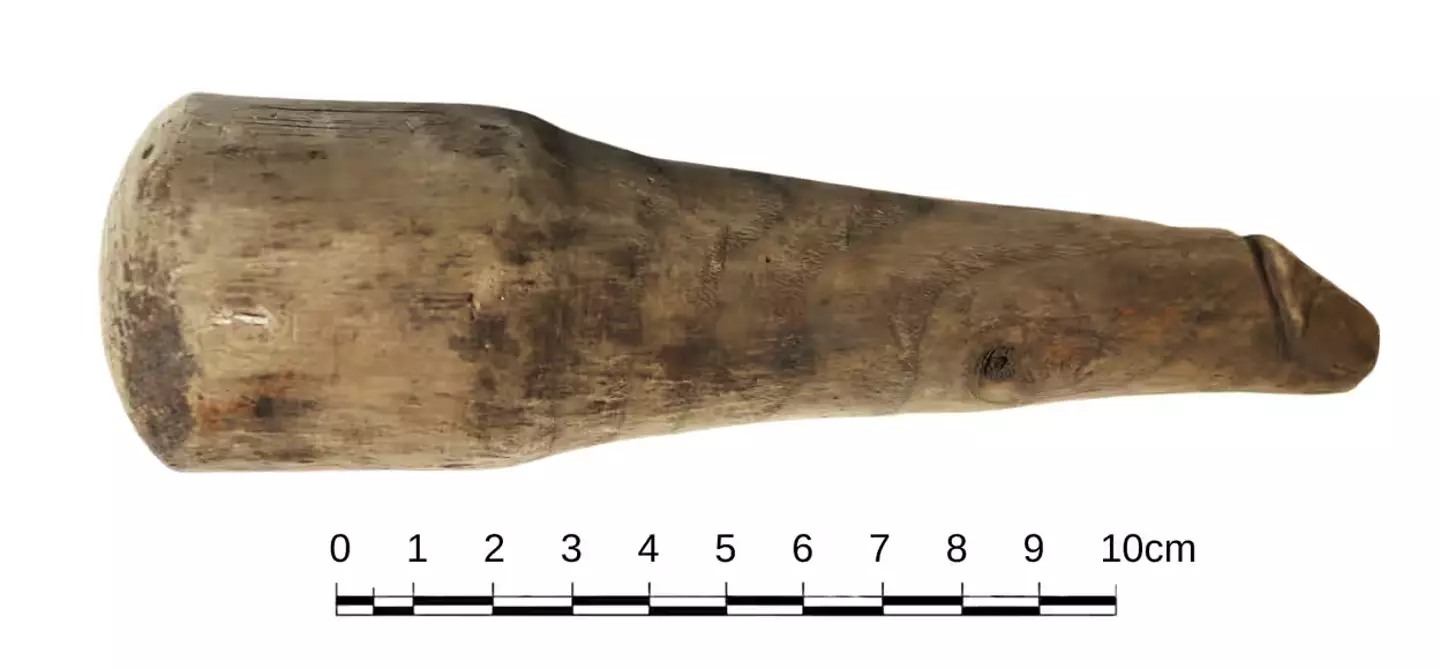
A ‘2,000-year-old dildo’ has been unearthed in the UK, and scientists say it's the earliest example of this kind of ancient Roman sex toy that's been found so far.
We may have Ann Summers, but Ancient Romans had a ‘non-miniaturized, disembodied carved wooden phallus’. I wonder if any tips were passed down.
According to a study published in February 20 last year by Antiquity, scientists believe they've found the ‘first known example’ of a sex toy used by Ancient Romans, a phallic shaped wooden object measuring 16cm.
It could originally have been larger than that, but wood is prone to warpage and shrinkage over time.
Advert
Over 20 years ago, archaeologists found the phallic artifact near a ditch near the Roman fort of Vindolanda on the 73-mile long Hadrian's Wall in Northern England.
The object was found next to many shoes, dress accessories and craft products, and was originally classified as a darning device before researchers began to think it was exactly what it looked like.

Newcastle University archaeology senior lecturer Rob Collins told the Guardian: "I have to confess, part of me thinks it’s kind of self-evident that it is a penis.
Advert
"I don’t know who entered it into the catalogue. Maybe it was somebody uncomfortable with it or didn’t think the Romans would do such silly things."
In their research paper, the scientists came up with three theories as to what the object could have been used for.

Their first thought was that it was used as a functioning dildo, although it's likely wasn’t used for penetration, just clitoral stimulation.
Advert
Collins said: "Sometimes they [dildos] weren’t always used for pleasure… they can be implements of torture so I’m very conscious of using the term sex toy."
Ouch.
Other theories are that it was used a pestle to crush medicine, or could have been placed at the entrance of buildings to promote good luck for businesses.
Collins said: "The size of the phallus and the fact that it was carved from wood raises a number of questions to its use in antiquity.
Advert
"We cannot be certain of its intended use, in contrast to most other phallic objects that make symbolic use of that shape for a clear function, like a good luck charm.
“We know that the ancient Romans and Greeks used sexual implements – this object from Vindolanda could be an example of one.”
Topics: Sex and Relationships, News, Education